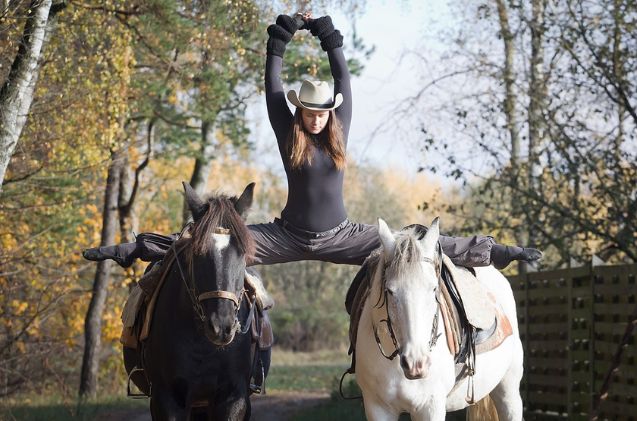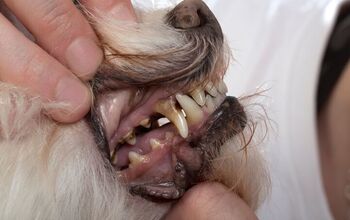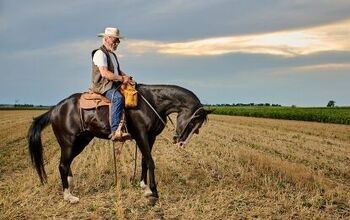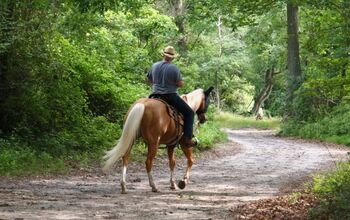Best Horses for Trick Riding

Have you ever watched the horses and riders performing in the circus and other trick shows, marveling at the incredible feats that they accomplish? If so, you’re not alone! Trick riding is a practice that has been popular throughout history, with many great photos available of performers dating back to the early 1900s. Modern trick riders can be seen performing stunts in circuses and equestrian shows around the world.
While any horse can be taught to perform tricks with their rider, some breeds are better suited to the demands of the trick-riding world. Here is a list of the 10 best horses for trick riding, including some important considerations for those that are getting started in this fun equestrian art form.
Percheron
The Percheron is a larger, more muscular draft horse. Many trick riders and circus performers work with raft horses due to their strong build, even temperament, and adaptability. They are slower than many of the more popular racehorses, but trick riding isn’t about speed. This is a highly intelligent breed and incredibly eager to please “their person.” They also have impressive stamina. These traits make the Percheron an excellent horse for training to perform unbelievable stunts with their riders. They are available in various colors, including black, gray, chestnut, bay, roan, and sorrel. While some Percherons will have white markings, too much white goes against the breed standard.
Arabian
The elegant appearance of the Arabian will help any trick rider shine. This beautiful, intelligent, spirited breed was initially used for transportation, war mounts, and hauling loads. They are a smaller breed, but their strength and balance make them ideal for the world of trick riding. They also have great stamina, having been used throughout history to travel long distances through challenging conditions. This allows them to continue training and performing effortlessly. The Arabian Horse Association recognizes 5 coat colors: black, chestnut, gray, roan, and bay.
Appaloosa
Appaloosas are most recognizable due to their beautiful spotted coats. These gentle and friendly horses are incredibly loyal and eager to please. This makes them an excellent choice for riders interested in doing the training necessary for trick riding. This highly versatile breed is seen in both the Western and English riding worlds, performing in various competitions and events. They excel in barrel racing, reining, roping, endurance riding, horse racing, and show jumping. This adaptability means that the Appaloosa is a multifaceted breed that you can count on to perform wherever your creative performance may take you.
Belgian
Another popular draft horse, the Belgian is revered for its strength, power, and reliability. Originating in the Netherlands, the breed was often seen pulling heavy wagons or being used for mounted warfare. Today, they are known to be one of the strongest horses in the world, making them a reliable choice for trick riders. Belgians are calm, kind, and gentle. Their temperament is so incredible that they are often used as teaching horses for beginners. This gentle giant can be found in many colors, including chestnut, red sorrel, bay, and roan.
Andalusian
A strong yet elegant breed of horse, the Andalusian was once a war horse coveted as a sign of nobility. That same strong yet compact build makes them an excellent choice for today’s trick riders. Often seen in the dressage ring, the breed is recognized for its commanding yet graceful appearance, a trait that makes it a common choice for parades and the more showy equestrian demonstrations. Their long, luscious manes and tails add further to their eye-catching appearance when performing. The Andalusian is a highly intelligent breed, making them easy to train.
Spanish Mustang
As the name indicates, the Spanish Mustang is a breed that originated from horses brought over to the Americas from Spain, but the breed itself is American. They are available in a wide range of colors, including both solid and paint patterns. The most common colors are black, chestnut, gray, and bay. Spanish Mustangs are used across English and Western riding activities, including team penning, show jumping, dressage, competitive trail, and gymkhana. They are athletic, hardy, and versatile horses with impressive stamina.
Tennessee Walking Horse
With both stamina and endurance, the Tennessee Walking Horse is ready to take on whatever training you may have in mind. This horse is well known for its smooth running walk, allowing riders a smooth, steady riding experience. For trick riders, this means better stability and fewer unpredictable movements to adjust to when trying to balance themselves. They come in several different coat colors and patterns, including black, brown, chestnut, bay, buckskin, dun, roan, pinto, and palomino. They have a calm disposition, making them an easy breed to work with.
American Quarter Horse
Best known for its speed, athleticism and maneuverability, the American Quarter Horse is often seen participating in barrel racing, reining, calf roping, driving, shop jumping, hunting, and other equestrian activities. The breed is sure-footed and sturdy, making them a reliable choice for trick riders. They are friendly horses with good temperaments, making them easy to work with in training and performance settings. American Quarter Horses are a beautiful breed available in a variety of colors, with the most common being a brownish-red sorrel.
American Paint Horse
With striking patterns and colors, there is no denying that an American Paint Horse will add to the visual element of your performance. But this isn’t the only reason they excel in the world of trick riding. The American Paint Horse has a similar history to the American Quarter Horse. Both were bred for their muscular “stock horse” body type, providing them with the strength to perform their work on the ranch and a low center of gravity for better maneuverability. They are intelligent, friendly, and calm, with a high degree of trainability.
Miniature Horse
You may be surprised to see Miniature Horses on our list. While these horses are known for their smaller size, with the characteristics of a full-size horse in a compact package, not all Miniature Horses are too small for all riders. Instead, some are suited for smaller, petite trick riders or children learning the art of trick riding. They are gentle and affectionate horses, making them popular in therapy programs. These small partners and companions often have a longer lifespan than full-size horses. Their adorable appearance can add a fun element to any performance.
Is Trick Riding Safe?
If you are concerned about getting into trick riding due to the risk factor, that is fair. Many of the tricks these riders perform are dangerous, and a small mistake could quickly lead to serious injuries. Some of the most significant risks faced by trick riders include human error or misstep, a horse that loses their footing, or an equipment malfunction.
Trick riding demands a lot of practice and training. If you are seriously interested in getting into this style of riding, you should seek out an expert in the field willing to teach you how to perform safely. Furthermore, anyone interested in trick riding should be prepared to invest in high-quality equipment. You must be able to rely on your equipment to keep you safe.
Can You Teach Yourself Trick Riding?
Riders interested in the trick-riding world may try some basic tricks at home. However, with the risk of injury, this isn’t recommended. These are acrobatic stunts that demand precision to avoid something going wrong. We often see online warnings on videos saying, “don’t try this at home.” This applies heavily to this scenario.
How Do You Get into Trick Riding?
If the journey to trick riding doesn’t start with learning at home, you may wonder how you DO get into trick riding. There are a few options available, but they all involve finding someone with the experience and expertise to teach you how to perform safely. To begin, search your local riding clubs and organizations to see if a coach specializes in this type of riding. Keep in mind that the club itself may not be dedicated to trick riding, but a coach within it could have the experience you’re looking for.
Try searching online for trick riders in your area. While many performing groups don’t have the time to take on a full-time coaching role, they may offer clinics or workshops periodically throughout the year. This is an excellent opportunity to gain experience, learn the basics, and potentially connect with an experienced rider that is able to work with you.
Younger riders that are just getting started in their riding journey should begin with standard beginner riding lessons. While these lessons aren’t going to focus on performance and tricks, they will provide you with the basic riding skills that are necessary to create a strong foundation. While both English and Western Riding styles can provide you with the skills needed, trick riding did evolve from riding techniques and practices in the American West. Unless you are interested in other English Riding activities, you would be better served by taking Western lessons.

Britt Kascjak is a proud pet mom, sharing her heart (and her home) with her “pack” which includes her husband John, their 2 dogs – Indiana and Lucifer – and their 2 cats – Pippen and Jinx. She has been active in the animal rescue community for over 15 years, volunteering, fostering and advocating for organizations across Canada and the US. In her free time, she enjoys traveling around the country camping, hiking, and canoeing with her pets.
More by Britt

































